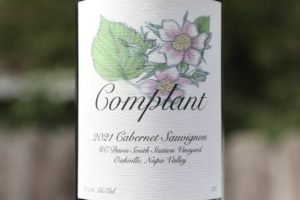

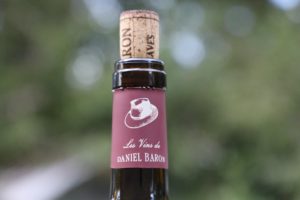 Complant Wine is a father and son owned wine brand which combines the wisdom of the father’s 50+ years in the wine industry with the son’s younger perspective. This creative duo, Daniel Baron (the father) and Sam Baron (the son) are producing some of Napa Valley’s most inspired, graceful and age worthy white and red wines. With curiosity comes passion which often then leads to obsession; both father and son are obsessed with producing wines that express the variety and the vineyard, are vibrant, are harvested when they still taste fresh and are restrained in terms of alcohol. Looking for homogeneous wines? Look elsewhere. Their inaugural vintage was in 2017.
Complant Wine is a father and son owned wine brand which combines the wisdom of the father’s 50+ years in the wine industry with the son’s younger perspective. This creative duo, Daniel Baron (the father) and Sam Baron (the son) are producing some of Napa Valley’s most inspired, graceful and age worthy white and red wines. With curiosity comes passion which often then leads to obsession; both father and son are obsessed with producing wines that express the variety and the vineyard, are vibrant, are harvested when they still taste fresh and are restrained in terms of alcohol. Looking for homogeneous wines? Look elsewhere. Their inaugural vintage was in 2017.
Both men have individual winemaking roles for Complant; Daniel refers to himself as the ‘lead dog’ for producing their Cabernet Sauvignon while Sam oversees the production of their Chardonnay. Someone once asked Sam why he wasn’t producing wines from other varieties in addition to the ubiquitous Napa Valley grown Chardonnay and Cabernet Sauvignon. His reply was something like, “because someone needs to do this; we don’t need to make Chardonnay above 14% alcohol or Cabernet Sauvignon above 15%”.
Daniel uses a music analogy to describe their influence on their wines. Musician Chris Thile was playing Daniel’s 1924 Gibson F-2 mandolin; Daniel was impressed by his mastery of the instrument and questioned him on his style. Thile told Daniel he was playing the instrument too hard, to back off and let the instrument play you. And this is the same approach they take in the cellar, gentle winemaking if you will, including a process of racking called Soutirage Traditional. This is essentially a very labor-intensive process of decanting wine from one barrel to another barrel using gravity flow (no pumping). This is very interesting to watch; a valve is attached to one end of the barrel and then the barrel is tipped slightly so the wine begins to flow out. Using a light and a glass to catch the wine as it flows, the winemakers are able to see sediment as soon as it appears, and this is when they stop the flow.
The name of their wine brand is rooted in a walk in a vineyard in Bordeaux that Daniel took with one of his mentors, Jean-Claude Berrouet of Château Pétrus. Jean-Claude mentioned that terroir was defined by Olivier de Serres in his work, Le Théâtre d’Agriculture as including climate, soil and the human contribution. He attempted to quote de Serres including using the word, Complant. Daniel speaks fluent French but had never heard this word before and questioned Jean-Claude as to its meaning. Jean-Claude mentioned that Complant is an obsolete French word which refers to a cultivated vine or tree that produces fruit.
Daniel later introduced the word Complant to Sam and both men agreed it would be a great name for their wine label. However, when Daniel began reading Le Théâtre d’Agriculture he discovered that Jean-Claude had incorrectly quoted the author, de Serres. The correct quote, translated to English is, “The climate, the soil and the cultivated plant are the foundation of the vineyard” – with no mention of the word terroir. Regardless, while the word terroir is often bandied about to describe a place, an additional character of terroir is rarely mentioned: the human element. In regards to grape growing, the interaction of humans with nature is an extremely important characteristic resulting in wine style – i.e. where to plant, rootstock, row direction, yield, manipulation, canopy management and when to harvest among a multitude of other decisions.
Each colorful wine label is distinctive, produced as an image from a visual in Daniel’s garden from watercolors painted by Napa based Kristina McDonald of The Golden Owl Tattoo & Gallery. The Chardonnay features an image of an apple blossom while for the Cabernet Sauvignon, an image is used of a blackberry blossom. The image on top of every cork is that of a French door knocker.
Daniel compares winemaking to a slider in Photoshop; the human involvement is the slider. At one end is natural wine and at the other end, often high alcohol, ripe linear expressions and large commercial productions. The trick each vintage is where to move the slider based on the wine’s chemistry. Regardless of vintage, they harvest for both freshness but also ripeness; this translates to generally picking early in the season. For example at the South Station Vineyard in Oakville, the source of their Cabernet Sauvignon, they are often harvesting when other wineries who purchase grapes from this site are still in the early process of grape sampling.
—
Daniel is originally from Brooklyn, NY; he moved to California in 1968. In the early 1970s Daniel lived on what was the old Fokker Winery (Clegg Ranch) in Knights Valley. One day he received notice that he needed to vacate the house because the owners of the property had secured a large loan from Bank of America and would be expanding the footprint of the vineyard. They asked Daniel if he wanted to work in the vineyard; he agreed. That was in 1971 and was his first wine related job.
He worked for the vineyard foreman of Clegg Ranch, John Rolleri. Daniel has fond memories of his time with Rolleri. In 1965 John was one of the founders of the Knights Valley Volunteer Fire Department; in the 1970s he convinced Daniel to also join the volunteer force. The memory of the Handley Fire in 1964 must have still been fresh in his mind. John was also comandante of the American legion post and worked on construction on the Bay Bridge in his early 20s. John once told Daniel that none of the workers ever knew the time because the foreman was the only one allowed to wear a watch. John’s family was deeply rooted in Sonoma County; Daniel remembers stories about John’s grandfather walking from Santa Rosa to St. Helena to help quarry stone to build Schramsberg Winery.
Daniel recalls John drove a large red truck with worn hubs. He remembers conversations with him while driving up and down the Silverado Trail. John would say, “you know Dan, I’m not one of those professors at UC Davis but I can tell you when Rossi budded over that block (gesturing to a vineyard as they drove by), and I can tell you Rossi had only a 68% success rate. And I can tell you the exact dates of weather related issues in the vineyards. Rolleri was first vineyard manger at Chateau Montelena; Daniel joined him at Chateau Montelena in 1973.
John one time instructed him, “go get a forklift from the winery but be careful of the rattlesnake living under the nearby pallet”. He even showed Daniel lines left in the dirt, correctly identifying them as rattlesnake tracks and noting the number of rattles from a particular snake. John taught him how to kill a rattlesnake. For those who never have killed a rattler, listen up; always use the head of the shovel to stun it first and then go for the kill with the blade of the shovel. Our father used to simply step on the rattlesnakes, grab the head with one of his hands and then cut off the head with a knife before the snake was later BBQ’d. Another time John sent Daniel to his brother’s house to borrow an old horse-drawn plow. He brought it back to Chateau Montelena, somehow hooked it up to a TD9 tractor and began to plow between the rows of vineyards, a combination of both modern and old technology.
Daniel’s Masters Thesis at UC Davis was in viticulture and bio meteorology; his advisor was Jerry Hatfield. Daniel studied the microclimates of Napa County and its relation to Cabernet Sauvignon. During his Master’s studies he worked in 11 vineyards during the 1976 and 1977 vintages and made wine from them all.
—
Reflecting back on who made the biggest difference in his career, it most definitely was Christian Moueix, the founder of Dominus Winery in Napa Valley and proprietor of Château Pétrus in Bordeaux. Daniel met Christian in 1981 while as a self-described itinerant bumming around France for 6 months. Daniel was broke and ready to ship out with the Merchant Marines; he remembers even asking a friend prior to his lunch with Christian if it would be appropriate to ask Christian for some gas money. Thankfully he did not. But that lunch with Christian changed the trajectory of Daniel’s career. He was hired to work at Château Pétrus and became the first person to ever live and work at that winery.
He and Christian made two trips from France to look at the historic Napanook Vineyard in Napa Valley; he recalls that about five days into their trip they had lunch at a restaurant that was in the space that currently houses Don Giovanni’s. They ordered a bottle of wine with their meal; they began discussing the possibility of looking at Western Australia to acquire vineyard land. Towards the end of the meal, both Daniel and Christian looked at the bottle of wine they ordered. They had only consumed 1/2 the bottle. Christian then mentioned that if they were at a restaurant in Saint-Émilion the bottle would be empty and they would most likely either order a plate of cheese or another bottle of wine. And then he said something like, “If we do nothing else in California, let us at least produce a wine that we would finish at lunch”.
Daniel spent 12 years at Dominus and recalls he was the ‘bridge’ between Christian and those employed at the winery. Following his time at Dominus he answered an ad looking for an assistant winemaker placed by winemaker Justin Meyer the co-founder of Silver Oak. Daniel worked at Silver Oak from 1994 through 2016 and helped launch TWOMEY Cellars.
Like his father, Sam also graduated from UC Davis and has worked all over the world including New Zealand, Burgundy and in Napa Valley for Renteria Vineyard Management, Vineyard 29 and Ashes & Diamonds. He studied in Madrid and speaks fluent Spanish. And before Complant, he and friends started a wine cooperative called Les Lunes Wine, focusing on producing natural wines. He is also the co-founder of Populis Wines.
Select Wines
Chardonnay
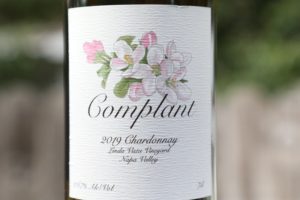
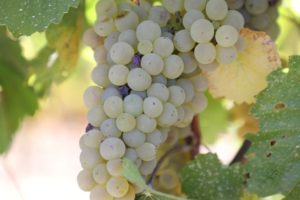 Low alcohol Chardonnay does not mean under ripe Chardonnay. The Complant expressions are a pure and unadulterated expression of the variety and are all distinctive and reflective of the vintage. The wines are fermented using indigenous yeast; Daniel has noticed over the years that the resulting alcohol varies more when using indigenous yeasts versus commercial yeasts. All vintages go through full malolactic fermentation with a light stirring of the lees kept to a minimum. And there are no capsules on any of their wines; despite what seems like a small dressing on a bottle, their impact adds up; Daniel mentioned that not using tin capsules saves 18 pounds per 100 cases of wine. Producing tin capsules are environmentally damaging; the lead time is often 4-5 months for custom capsules from factories in Portugal and Spain. Despite this logjam in the industry, there are no tin capsule manufacturers locally, most likely due to stringent domestic environmental regulations. The Complant wines are aged in bottle for 1.5 to 2 years prior to their release.
Low alcohol Chardonnay does not mean under ripe Chardonnay. The Complant expressions are a pure and unadulterated expression of the variety and are all distinctive and reflective of the vintage. The wines are fermented using indigenous yeast; Daniel has noticed over the years that the resulting alcohol varies more when using indigenous yeasts versus commercial yeasts. All vintages go through full malolactic fermentation with a light stirring of the lees kept to a minimum. And there are no capsules on any of their wines; despite what seems like a small dressing on a bottle, their impact adds up; Daniel mentioned that not using tin capsules saves 18 pounds per 100 cases of wine. Producing tin capsules are environmentally damaging; the lead time is often 4-5 months for custom capsules from factories in Portugal and Spain. Despite this logjam in the industry, there are no tin capsule manufacturers locally, most likely due to stringent domestic environmental regulations. The Complant wines are aged in bottle for 1.5 to 2 years prior to their release.
While working at Arlequin Wine Merchant in San Francisco, Sam first met winemaker and viticulturist Steve Matthiasson. When Complant needed a vineyard source for Chardonnay, Steve connected them with his certified organic Linda Vista Vineyard in Napa Valley’s Oak Knoll District. The Complant Chardonnay is always barrel fermented using ‘top shelf’ Burgundian barrels and is bottled unfined and unfiltered. Their Chardonnay is always on the lower end of the spectrum in terms of pH, acidity and alcohol by volume.
The 2017 Complant Chardonnay, Linda Vista Vineyard is deep gold in color; the bouquet offers pretty aromatics of stone fruits including peach, yellow nectarine and apricot. Additional notes including pineapple, lemon meringue, honeysuckle, butterscotch, vanilla and hazelnut. The aromatics are elegant with plenty of fruit 8 years post vintage although some light tertiary aromatics have crept in. This wine is a fully ripe and a clean expression of the variety and a testament that ripeness can be obtained despite a lower alcohol (12.13% by volume). On the palate there are flavors of golden apples, quince, nectarine, pineapple and ginger. The palate sings with plenty of verve and vibrancy and is complemented by a supple and gentle texture. The finish lingers illuminated brightly but with a balanced acidity. In a blind tasting we would have found it a significant challenge to identify the aged of this wine due to its still youthful character.
The 2018 Complant Chardonnay, Linda Vista Vineyard is medium to deep gold in color; the first aromatic hit and the most pronounced on this bottling is a scent that reminds us of coring and peeling recently picked golden delicious apples and the resulting juice that pools around the corer. The palate offers flavors of golden delicious apples, green apple, comise pear, lemon meringue, kumquat and lime. This bottling is perhaps even brighter across the palate than the previous vintage. The finish lingers with a persistent citrusy character. Despite 7 years post vintage, we would venture a guess that this is still as bright and balanced as the day it was bottled. This wine is 11.67% alcohol.
The 2019 Complant Chardonnay, Linda Vista Vineyard is deep gold in color; the bouquet is initially shyer than the previous vintage and needs some time for its aromatics to be fully coaxed out. It reveals scents of golden apples, honeycomb, dried apricot, yellow nectarine, papaya, mango, vanilla and a waxy character perhaps like lanolin. On the palate there are flavors of green apple, a hint of fennel, not fully ripe peach, pomelo, grapefruit and pineapple. Lingers with a subtle note of tarragon. The texture especially is a hallmark of this particular bottling and vintage; it offers a saline and almost waxy attribute. Not quite as bright as the exceptional 2017 bottling. Still it finishes lively with plenty of lasting flavor. This wine is 11.67% alcohol.
The 2020 Complant Chardonnay, Linda Vista Vineyard is medium to deep gold; the elegant bouquet offers layers of stone fruits including white and yellow nectarines, apricot and is accompanied by pineapple, apple skin, walnut skin, honeysuckle, jasmine, peach blossom and a hint of chamomile. And a layer of toasted hazelnut. Regardless, there is plenty of fruit in this bottling. This wine tastes like not fully ripe golden delicious apple, white nectarine and peach and mandarin orange. This is among the richer and more intensely flavored of their vintages. Minerally. The mouth feel is creamy, supple and saline; its texture glides as smoothly across the palate as Kristi Yamaguchi gliding across the ice during the prime of her career. The finish is brightly lit with the acid making its way into every crack and crevice on the palate. Mouthwatering. Refreshing. This wine is 11.67% alcohol.
The 2021 Complant Chardonnay, Linda Vista Vineyard is medium gold to deep gold in color. On the bouquet there are scents of green apple, not fully ripe pear, ruby grapefruit, citrus blossom, star jasmine, a tangerine zest and some herbal notes including of thyme. The aromatics are beautiful. This wine tastes like red apple, grapefruit, lemon zest, yellow nectarine, apricot and not fully ripe pear. The palate is more fleshy than some of the other vintages, offering a rounded, creamy and supple texture carrying a noticeable weight. High acidity. Bright. But its not viscous and that is always an important distinction in describing the texture of Chardonnay. This wine is 13.33% alcohol.
The 2022 Complant Chardonnay, Linda Vista Vineyard is medium to deep gold in color; the bouquet offers scents of quince, red apple, pear, white peach, star jasmine, citrus blossom and a very pleasing but subtle sweet spice aromatic we didn’t notice in the other vintages and one that we are having a hard time identifying. Minerally. Herbal. On the palate there are flavors of lemon juice, mandarin orange, not fully ripe pineapple, green apples and an herbal but not green attribute that lingers on the long finish. Like the 2021 vintage the palate is also fleshy, saline/briny and creamy, an important characteristic of this wine. The acidity is as bright as a halogen lamp and complements the fleshy and robust texture perfectly. The finish is long and flavorful and immediately invites another sip. Refreshing. Bright and alive this wine has years ahead of it with the proper cellaring. This wine is 11.4% alcohol.
Cabernet Sauvignon
All their Cabernet Sauvignon is from the UC Davis owned South Station Vineyard in Oakville, a site Daniel had long been familiar with having first visited in 1976 and managed from 1982-1994. The wine is aged in French oak thin stave Bordeaux barrels. And Daniel brought over a variety of artisan tools from France used for soutirage – racking from barrel to barrel, a practice he first implemented at Dominus and then later at TWOMEY. Harvest decisions for their Cabernet Sauvignon are made based on the the ripeness of the skins; Daniel told us the best way to evaluate this is to chew on the skins 15 different times as the grapes ripen. When the color in your spit is black, the grapes are becoming ready to harvest. And then the harvest window is generally quite short in order to capture full phenolic ripeness.
The 2020 Complant Cabernet Sauvignon UC Davis South Station Vineyard, Oakville is deep ruby in color; the inherent typicity of the variety is immediately evident on the bouquet. The nose smells like red chili spice, a light note of jalapeno – a union that is herbal but not green. And that is an expression of the variety when its attributes are not bled out due to over ripeness. And its fruit characteristics include red plum, red cherry and currant. Fresh, lively and vibrant, this wine sings across the palate like Renée Fleming belting out an inspirational aria. Its flavors include red cherry, red plum, currant and raspberry on the leaner side of the ripeness spectrum. Lingers red-fruited with an herbal and mouth watering freshness including of smoked sage. The tannins are highly integrated and their texture feels seamless on the finish. Persists with a subtle drying character. This wine is 13.95% alcohol.
The 2021 Complant Cabernet Sauvignon, UC Davis South Station Vineyard, Oakville is deep ruby with an amaranthine rim; the bouquet offers noticeably more fruit on the bouquet then the 2020 vintage with herbal characteristics nonexistent. Its scents include red cherry, red plums, dark raspberry, a floral layering including violets and lilacs and a light layer of old cedar. There is also a dried herb attribute including of sage. Superbly balanced for a 2021 Napa Valley Cabernet Sauvignon, the palate is more red fruited than dark and tastes like red cherry, red plum, dark raspberry and currant. This is a fresh, vivacious and as brightly lit a wine as one will find from a Napa Valley Cabernet Sauvignon. Its red fruited and tart finish continues to cause one to salivate. The tannins are lightly grainy and for a young wine, are already nicely integrated into the finish. This is lovely delineation of both the freshness of the vineyard and characteristics of this particular vintage. The wine lingers with a dusty character and a subtle but noticeable note of dried tobacco leaf. This wine is highly nimble on its feet and is going to be fresh for years to come. Beautiful. It is 14.20% alcohol.
The 2022 Complant Cabernet Sauvignon, UC Davis South Station Vineyard, Oakville is deep ruby and nearly opaque. The bouquet smells like a diversity of berries including raspberry, blackberry, boysenberry and Persian mulberry accompanied by red cherry, a tobacco spice, and a note of old cedar box. And there is a layer of red chili spice and a hint of tomato leaf. The star of the show here is both the red fruits and a lighter structure. Its flavors include tart cherry, raspberry, currant and cranberry, finishing with a note of Santa Rosa plum. The tannins are gravelly and lightly grainy, persistent in tandem with the tart fruit and a light note of dried tobacco leaf. The finish is fresh and mouth watering. Very much a versatile food friendly bottling. This wine is 13.8% alcohol. This wine was harvested before the extreme heat spikes around Labor Day weekend
For more information, to order wine, to join their mailing list or to request a tasting appointment with either Daniel or Sam or both, visit: complantwine.com
——
NAKED WINES
Napa Valley/Sonoma County
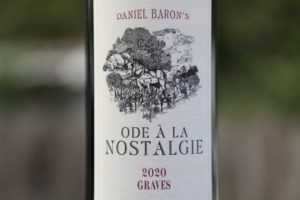
 Daniel produces wines for Naked Wines from both Napa Valley, Sonoma County and Bordeaux, France. The wines were made at Bin to Bottle in Napa. His oak regiment is restrained with maximum new oak barrels topping out at around 33%. He uses both French and American oak, preferring the sweetness from American oak without the dill and banana boat sunscreen aromas and the French oak with its contributing walnut or hazelnut character but without too many oak/woodsy tannins. The Naked wines are produced at a high quality to value ratio including the wines with Daniel’s name on the bottle. He strives to produce an authentic dry wine that expresses the vintage and place and compels people to reach for another glass. It certainly helps when the price is right in regards to introducing people to these types of wines.
Daniel produces wines for Naked Wines from both Napa Valley, Sonoma County and Bordeaux, France. The wines were made at Bin to Bottle in Napa. His oak regiment is restrained with maximum new oak barrels topping out at around 33%. He uses both French and American oak, preferring the sweetness from American oak without the dill and banana boat sunscreen aromas and the French oak with its contributing walnut or hazelnut character but without too many oak/woodsy tannins. The Naked wines are produced at a high quality to value ratio including the wines with Daniel’s name on the bottle. He strives to produce an authentic dry wine that expresses the vintage and place and compels people to reach for another glass. It certainly helps when the price is right in regards to introducing people to these types of wines.
The 2021 Daniel Baron’s ODE Cabernet Sauvignon Napa Valley is from vineyards in Chiles Valley and Oakview Vineyard. This wine is deep ruby in color; minerally, the bouquet sports aromas of graphite, freshly tilled soil along with dark cherry, blackberry and boysenberry. On the palate there are flavors of red cherry, dark raspberry, dark plum, blackberry, tobacco spice, a light crushed pepper character and smoked cedar. Savory. Bright. Refreshing. Mouth watering. The finish lingers with grainy and gritty tannins which ultimately outpace the fruit. Lifted, this wine is still tightly wound 4 years post vintage and is filled to the brim with energy in terms of both texture, flavor and structure. Steak and BBQ please.
The 2021 Daniel Baron’s ODE Cabernet Sauvignon Oakville, Napa Valley is deep ruby, opaque and has an amaranthine color on the rim. The bouquet is fresh and features layers of ripe but not over ripe fruits including plum, cherry, blackberry and maybe even some red licorice. These fruits are accompanied by some darker spice characters including crushed pepper and dark baking spices including of clove. The palate tastes like tart cherry, not fully ripe red plums, currant and cranberry. The red fruit finish extends for quite some time, anchored by gritty, grainy and pixelated tannins fully coating every part of the palate. This wine needs a few more years to settle down as its texture is still somewhat edgy – and at this point 4 years post vintage, it is highly energetic.
The 2021 Franc-O-Phone Cabernet Sauvignon is 65% from Sonoma County and 35% from Napa County and is 100% varietal. Two vineyards are from Napa County and two from Sonoma County. This wine is deep ruby and opaque; the bouquet offers aromas of dark cherry, blackberry and boysenberry with additional notes of toasted cedar, smoked sage and crushed pink peppercorn. On the palate there are flavors of cherry, blackberry and black currant. Nicely balanced this wine sports broadly coating tannins with a rounded and lightly gravelly grip. This wine lingers dark, savory and with a persistent drying character and a note of dried tobacco leaf.
France
In 2020 Daniel visited Bordeaux and interviewed numerous producers and identified two producers quite distinctive from each other. He works with both producers to blend the Ode a La Nostalgie bottlings.
The 2020 Daniel Baron’s Ode a La Nostalgie Graves is 52% Merlot and 48% Cabernet Sauvignon. The grapes for this wine were sourced from sites near the village of Portets. This wine is deep ruby; the nose is focused on its core of fruit but with a simultaneous restraint. It smells fresh and red fruited with scents of cherry, currant, dark raspberry, Santa Rosa plum and old cedar box and a light scent of dried rosemary. As the wine evolves its opens to a note of espresso. On the palate there is a union of both red and darker fruits including cherry, raspberry and plum. Its darker savory and spicy notes persist on the finish including of crushed pepper, toasted cedar and dried sage. The tannins are highly resolved, are rounded and meld seamlessly on the smooth finish. Medium acidity. This is a balanced and easy drinking bottle.
The 2021 Daniel Baron’s Ode a La Nostalgie Saint-Émilion Grand Cru is 80% Merlot, 15% Cabernet Franc and 5% Malbec. This wine is medium to dark ruby in color; if we smelled this bouquet from a Napa Valley dominated Merlot we would be surprised – but this wine is not Napa Valley. Its initial aromas are dark with gamey characteristics, barnyard, tar, mushrooms, old cedar box, crushed pepper and sweaty and well-worn baseball mitt leather being used on a hot day and smoked sage. Dark fruits are also present, including spicy plum skin and blackberry, but they take a backseat to these more savory and spicy aromas. Fresh and alive across the palate, there are flavors of red cherry, red plum, currant and cranberry. The finish lingers brightly lit with juicy acidity and lightly gravelly textured well-integrated tannins. While this wine is from Bordeaux our first thought in terms of pairing is Italy – a tomato based pizza or pasta please.

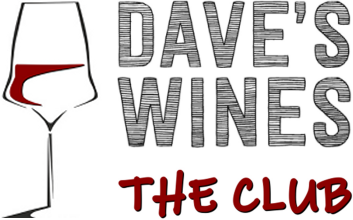




Leave a Reply